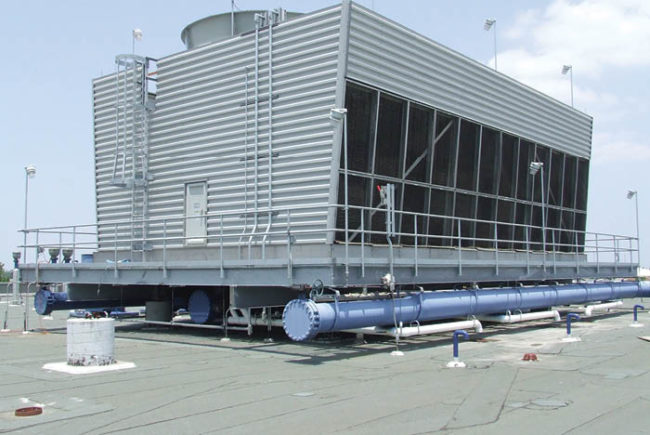
The details of hazardous waste identification and management often fall to environmental services managers.
Image by Getty Images
As health care facilities emerge from the immediacy of the COVID-19 pandemic, it’s time to again examine the regulatory environment and how environmental services (EVS) managers can ensure compliance and reduce liability.
While COVID-19 was impacting every health care facility directly over the past year, and still continues to this day, another change has been making its way around the country — but for the better. On Aug. 21, 2019, the Environmental Protection Agency’s (EPA’s) Hazardous Waste Pharmaceuticals Rule, better known as Subpart P, took effect in Iowa, Alaska, Indian Country and most U.S. territories.
States that are authorized to manage their own hazardous waste programs have one or two years to adopt the new regulation, based on whether they can adopt through regulatory action or must seek a legislative change. According to the EPA’s webpage, more than 20 states have so far adopted Subpart P, which is great news for health care facilities from a hazardous waste liability perspective.
Even better news is that EVS managers can, and in the case of small quantity generators (SQGs) and large quantity generators (LQGs) of hazardous waste, must register their facilities with their state under Subpart P. By doing so, hazardous waste pharmaceuticals no longer count toward generator status, thereby reducing the possibilities for noncompliance, especially as an LQG of hazardous waste.
The “RCRA (Resource Conservation and Recovery Act) Subtitle C Site Identification Form (EPA Form 8700-12)” is the documentation that EVS managers will need to complete and submit if the facility is currently operating as an LQG or SQG of hazardous waste, including pharmaceutical hazardous waste. For managers who are in a state that has already adopted Subpart P, the EVS manager — or possibly the facilities manager — may have already completed and submitted this form within 60 days of adoption or with their biennial report, depending on the state and their generator status.
The sidebars on pages 47 and 49 of this article explain how to begin and complete the RCRA Subtitle C Site Identification Form.
Questions and key points
As EVS managers become familiar with the required documentation, they may benefit from a closer look at the new regulations overall. Following are answers to some common questions as well as key points to remember:
Why compliance is important. The reason compliance with this new regulation is so important is that under Subpart P, hazardous waste pharmaceuticals will no longer count toward hazardous waste generator status once this rule is in effect in a given state, assuming the facility is an SQG or LQG of hazardous waste.

Table 1. Generator status quantity and accumulation
Source: Environmental Protection Agency
If a facility is a very small quantity generator of hazardous waste, some benefits of the rule still apply; but while registration is not required, without it the generation of hazardous waste pharmaceuticals still counts toward generator status, putting that facility at greater risk of noncompliance (see Table 1 above).
Who manages hazardous waste pharmaceuticals? Hazardous waste identification and management is usually an area EVS managers learn on the job. Facilities managers and health and safety managers may have responsibility for this area, but often the details fall to EVS.
For the past 20 years, the EPA and state regulatory agencies have become much more active in monitoring how those drugs that become a hazardous waste are managed. A number of facilities have been fined hundreds of thousands of dollars for violating hazardous waste rules with respect to the management and disposal of drugs that meet the definition of a hazardous waste.
How are hazardous waste pharmaceuticals defined? There are two basic categories of hazardous waste that apply to waste pharmaceuticals: listed wastes and characteristic wastes.
Within the category of listed wastes are P-listed drugs, which are considered to be acutely toxic, and have included in the past common drugs such as warfarin and nicotine. U-listed drugs include some of the chemotherapy drugs used in health care. Characteristic wastes are primarily ignitable or toxic and include some heavy metals over certain concentrations, ignitable hazardous wastes and specific wastes that must meet certain landfill disposal restriction requirements.
Table 2 below provides some examples of common pharmaceuticals that are listed or characteristic hazardous wastes.

Table 2. Examples of hazardous waste pharmaceuticals and chemicals
Source: Charlotte A. Smith, R.Ph., M.S.
Which drugs have contributed the most to generator status? Originally, nitroglycerin and epinephrine were both regulated as hazardous wastes and contributed greatly to many hospitals becoming LQGs of hazardous waste. Fortunately, both of those drugs, when prepared for medical use, came off the EPA’s list more than 10 years ago. However, a few states, such as Washington and Connecticut, still regulate them.
Prior to Subpart P, warfarin and nicotine had been the issue, especially empty warfarin stock bottles generated by the pharmacy department. Under the new rule, while chemotherapy drugs such as arsenic trioxide, cyclophosphamide and mitomycin must still be managed as hazardous waste, along with unused silver creams, pressurized aerosols and alcohol-based formulations, they will no longer contribute to generator status.
Also under the old rule, the hazardous waste generation status often increased due to lack of sorting hazardous from nonhazardous pharmaceutical waste. Unless a facility kept meticulous monthly records of hazardous waste generation, the EPA and state would rely on shipping manifest weights when surveying facilities, so not sorting correctly could often push a facility into a higher category than necessary.
Hazardous waste pharmaceuticals can no longer be sewered anywhere. Under a separate rulemaking, the EPA banned the sewering of any hazardous waste pharmaceuticals anywhere in the U.S. This was done under a separate provision, known as the Hazardous and Solid Waste Amendments of 1984, which enables the EPA to require compliance in all states immediately.
This sewer ban took effect on Aug. 21, 2019. If pharmaceuticals are being drain-disposed anywhere in the facility, EVS managers should check to see if any hazardous waste pharmaceuticals are included, especially controlled substances. Better yet, they should work with pharmacy, nursing and other departments to move toward a “no drugs down the drain” policy.
Hazardous waste-controlled substances exempted under Subpart P. Once a state has adopted Subpart P, the few controlled substances that are also hazardous wastes will be exempted from regulation if they are incinerated. That means: not down the drain and not in the red sharps container.
The Drug Enforcement Administration (DEA) does not dictate disposal requirements for controlled substance wastage after administration to a patient if all environmental regulations are followed, the wastage is documented and efforts are made to prevent diversion.
The EPA specifically requires incineration at one of five types of common incinerators. Because many facilities are now using sequestration devices to prevent diversion, this means those devices must be incinerated and cannot be placed into the trash. The DEA requires controlled substances in the pharmacy’s inventory to be sent to a reverse distributor and not disposed into a sequestration device.
Over-the-counter (OTC) nicotine is no longer a hazardous waste. Under another separate regulatory change, which took place federally at the same time as Subpart P, the EPA exempted OTC nicotine replacement gums, lozenges and patches from regulation as a hazardous waste. While this occurred simultaneously with Subpart P, it’s important to note it is a separate rulemaking, and states may or may not adopt this exemption because it is less strict than the RCRA regulations.
According to the EPA website referenced earlier in this article, more than 25 states thus far have either adopted the nicotine amendment or are using enforcement discretion, which amounts to the same thing from a practical perspective. The big benefit here is that nicotine wrappers and blister packs no longer need to be disposed into the hazardous pharmaceutical waste container but can be discarded in the trash. It’s important to note, however, that prescription nicotine, including empty packaging, is still regulated as a hazardous waste.
Whether or not to sort hazardous pharmaceutical waste. Another area to review that can potentially save organizations money is whether or not it makes sense to sort hazardous pharmaceutical waste from nonhazardous pharmaceutical waste. The difference in per-pound rates of disposal can be as much as four times greater, comparing disposal at a hazardous waste incinerator versus a municipal waste-to-energy facility.
Each facility needs to consider specific disposal cost differences and evaluate the cost of training nurses, pharmacists and other health care professionals on sorting practices versus managing all pharmaceutical waste as hazardous waste. The EPA has indicated a preference for all pharmaceutical waste to be managed as hazardous waste and has strongly recommended that practice. It has not, however, done a cost analysis and, instead, leaves that up to the organization.
Registering a health care facility under Subpart P. If a facility is currently an SQG or LQG of hazardous waste, including its hazardous waste pharmaceuticals, and is in a state that has adopted Subpart P, the facility must register with the state using Form 8700-12. This function is most readily performed by EVS managers who have routine access to the waste vendor currently managing both pharmaceutical hazardous waste and other hazardous wastes, such as xylene, methanol and gram stain from the laboratory. Acids, bases and nonrecycled lead aprons may also be generated as hazardous wastes.
EVS managers should request a 12-month year-to-date summary of all hazardous waste transported by the hazardous waste vendor. It should include all hazardous waste codes along with poundage. If pickups are not by month, but quarterly, EVS managers should consider those quantities for the generator status calculation unless a monthly record of actual amount generated is being kept by the department in which the waste is generated, usually the lab. Managers should choose the new generator status based on those amounts. They should not count pharmaceutical waste into the calculation and should not list pharmaceutical hazardous waste codes when completing the form.
While completing the form is not difficult in itself, reviewing all the guidance provided by the EPA can be intimidating for those who have no experience with it. Please see the checklist in the sidebar on page 49 for step-by-step instructions through the process.
Still overwhelmed?
Association for the Health Care Environment (AHE) members can access a webinar on this topic. AHE will also be providing an infographic and technical report that address these regulatory changes and how they impact facilities.
The author’s firm provides additional help for a fee. Readers may contact info@pharmecology.com to learn more.
Charlotte A. Smith, R.Ph., M.S., is senior regulatory adviser for Waste Management Sustainability Services’ PharmEcology Services, which is based in Houston. She can be reached at csmith32@wm.com. This information is solely for educational purposes and provides only a general description of various regulatory requirements. For a complete description, consult the relevant federal and state regulatory statutes. The author and her company make no warranty, express or implied, with respect to such information and disclaim all liability resulting from any use or reliance of this information. Nothing in this article constitutes legal advice and readers should not legally rely on any information provided in this article.





